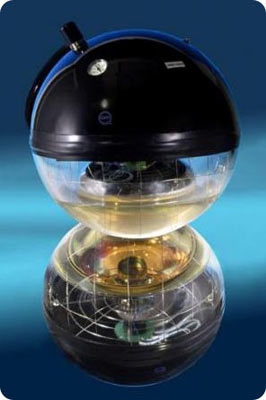180810-antares2.jpg

An ANTARES module. Credit: CEA/Irfu-SAp
In the spring of 2006, a whirling current stirred up the Mediterranean Sea off the coast of France. It forced water from the surface all the way to the bottom, a mile and a half deep. The water most likely carried a lot of tiny shrimp, jellyfish, bacteria, and other creatures -- many of which lit up the depths with their own light.
Marine biologists watched it happen with instruments attached to one of the world’s oddest astronomical telescopes: a thousand light detectors anchored to the bottom of the Mediterranean.
Called ANTARES, it’s designed to detect flashes of light from particles created in exploding stars and other powerful objects. It’s placed underwater to filter out flashes from other types of particles.
ANTARES also holds instruments that monitor the ocean. They’re helping marine scientists compile one of the most detailed profiles of the seafloor anywhere on Earth.
The instruments check temperature and salinity, currents, and the amount of solid material in the water -- like living organisms. Many of these organisms produce light, which can interfere with the astronomical work.
In March 2006, the light suddenly grew 10 times stronger. The jump coincided with a strong downward current.
The current was powered by an eddy of water at the surface. The current probably carried an abundance of light-producing organisms. The glow persisted for months, perhaps until all those organisms began to die out -- deaths that made it easier for scientists to detect the deaths of distant stars.

